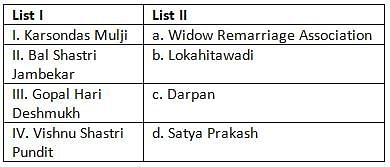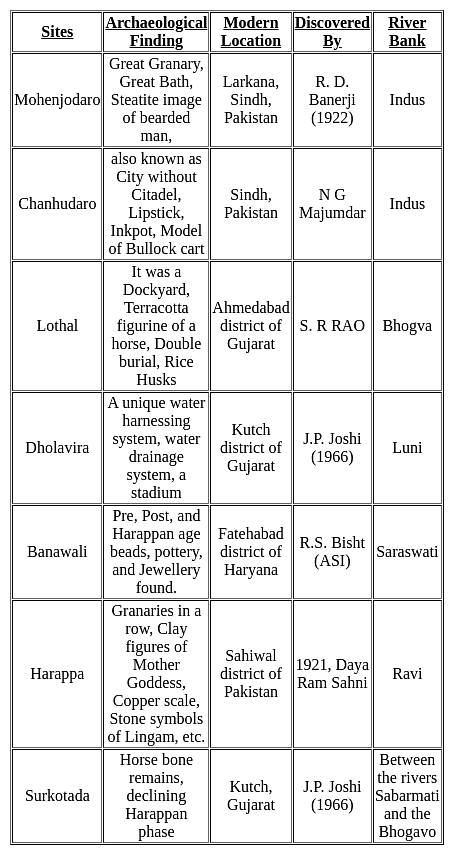MH SET Paper 2 Mock Test - 2 (History) - MAHA TET MCQ
30 Questions MCQ Test - MH SET Paper 2 Mock Test - 2 (History)
Which of the following Delhi Sultans did not allow the Ulemas to interface in matters of state?
| 1 Crore+ students have signed up on EduRev. Have you? Download the App |
Rekha Deula, Pidha Deula and Khahara Deula are the architectural features of temples from which of the following regions?
Kol Mutiny took place in which of the following years?
Post-independence, India made significant progress in addressing famines and epidemics through:
- Establishment of the Planning Commission
- Adoption of the Green Revolution
- Eradication of smallpox
- The launch of the Universal Immunization Program
The response and policies of the British colonial administration regarding famines and epidemics were characterized by:
- Proactive and timely interventions
- Systemic neglect and underinvestment in public health infrastructure
- Scathing criticism from historians
- Significant efforts to address food security
Subhash Chandra Bose fought the Congress Presidential elections in 1939 on the ground that
The emergence of the "positive" school of historical writing in the 19th century was a reaction to which of the following trends in historical scholarship?
The leader of the Sepoy Revolt at Raipur in January 1858 was-
Match List –I with List – II, and select the correct answer from the codes given below:
List – I
A) Subhas Chandra Bose
B) Vallabhbhai Patel
C) Iqbal
D) Batukeshwar Dutt
List – II
1) Throwing of the bomb in Central Assembly
2) Haripura session of Indian National Congress
3) Operation Polo
4) Allahabad Session of Muslim League, 1930
Codes:
Assertion (A): Muhammad Tughluq conferred honours and high appointments upon foreigners, converted Hindus, members of Sufi families, Afghans and even Mongols.
Reason (R): He wanted to weaken the old nobility and set up a new order of office-holders of heterogeneous racial origins.
Consider the following statements with reference to the Indian railways:
1) In 1853, the Indian railways were to be constructed and operated by the state agency.
2) By 1869, the Government of India decided to build new railways as private enterprises.
3) After 1880, railways were built through private enterprise as well as through state agency.
Which of the statements given above are incorrect?
The Panchsheel, or Five Principles of Peaceful Coexistence, played a significant role in shaping Sino-Indian relations. Among the following statements regarding Panchsheel, which are CORRECT?
(a) The principles were first articulated during negotiations to resolve the border dispute between India and China's Tibet region.
(b) The Panchsheel aimed to promote a non-interventionist approach to international relations, particularly among newly independent states.
(c) The principles were strictly adhered to by both India and China throughout their entire relationship.
(d) The concept of Panchsheel originated entirely from Chinese foreign policy ideology.
The English edition of ‘Gitanjali’ was published in the year-
Consider the following statements.
- Indian National Army was formed by Subhash Chandra Bose.
- The INA founded the first provincial government of free India at Singapore.
Choose the correct statement.
At the time of gaining independence, the President of ‘Indian National Congress’ was-
The report ‘Journey through the Kingdom Awadh in the year 1849-50’ was written by-
Chronologically arrange the following treaties signed by the British with Native States and select the correct option:
I. The Treaty of Salbai
II. The Treaty of Bassien(Vasai)
III. The Treaty of Srirangapattanam
IV. The Treaty of Allahabad and Kara
During the colonial period in India, what was the purpose of the Atkinson Commission?
Consider the following statements.
1) Charter Act of 1813 incorporated the principle of encouraging learned Indians and promoting the knowledge of modern sciences.
2) English Education Act 1835 decided to devote the teaching of Western Sciences and literature through the medium of English and as well as through the Indian languages.
3) The Wood’s Dispatch of 1854 repudiated the ‘downward filtration’ theory.
Choose the correct statements.
Consider the following statements.
- Indian National Army was formed by Subhash Chandra Bose.
- The INA founded the first provincial government of free India at Singapore.
Choose the correct statement.



















